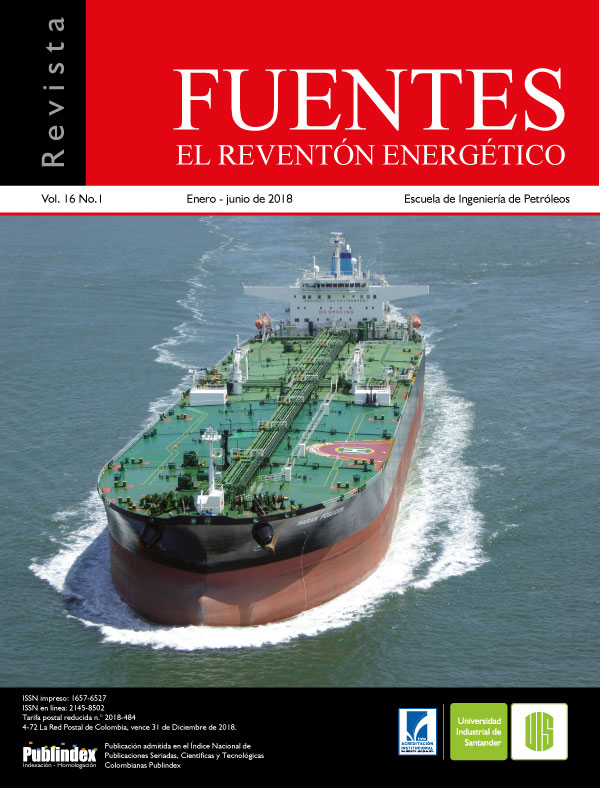Study of catalytic aquathermolysis in processes of upgrading of heavy petroleums as a complementary method in the hydrocarbons thermal recovery
Published 2018-07-24
Keywords
- Aquathermolysis,
- Catalytic,
- Steam,
- Viscosity,
- Saturated
- Aromatics,
- Asphaltenes ...More
How to Cite
Abstract
Density and viscosity are the properties which differentiates light oil of the heavy and extra-heavy oil; heavy-extra-heavy oil contains more indefinite chemical elements such as resins and asphaltenes whose have more pures components (saturated and aromatics). In the steam injection, the viscosity is reduced at 97%, in addition, the implementation of steam also changes the composition of the mixure due to chemical reactions between the water steam, organics petroleum compounds, minerals and catalysts, reaching a switch in the molecular structure of petroleum; this process is defined as catalytic aquatermolysis. The reactions of catalytic aquatermolysis are: pyrolysis, hydrolysis, Water Gas Shift, hydrodesulphurization (HDS), hydrodesnitrogenación (HDN) and hidrodeoxygenation (HDO). The use of metal catalysts and hydrogen donors have a synergistic effect, in addition, the compounds that react with water steam are resins and asphaltenes. On a macro scale, it is reduced by 90%. At the field scale, pilots were implemented in the Liaohe basin, China, where it was used as a complement to the cyclic steam injection technology, showing reductions in viscosity of 80% and relevant changes in the composition of the oil.
